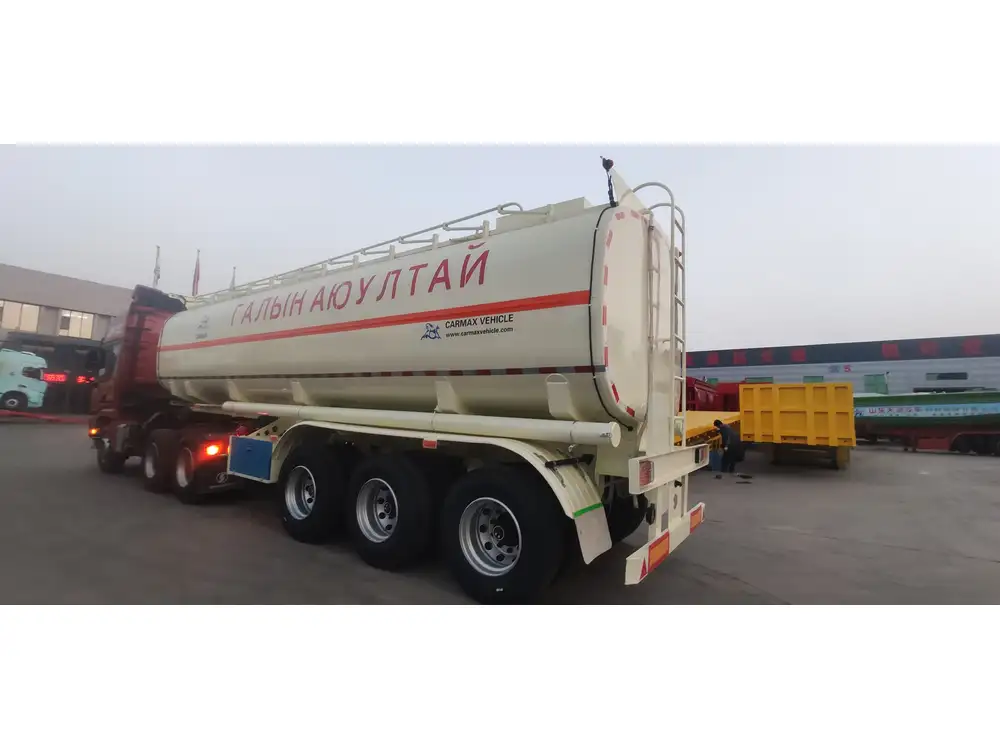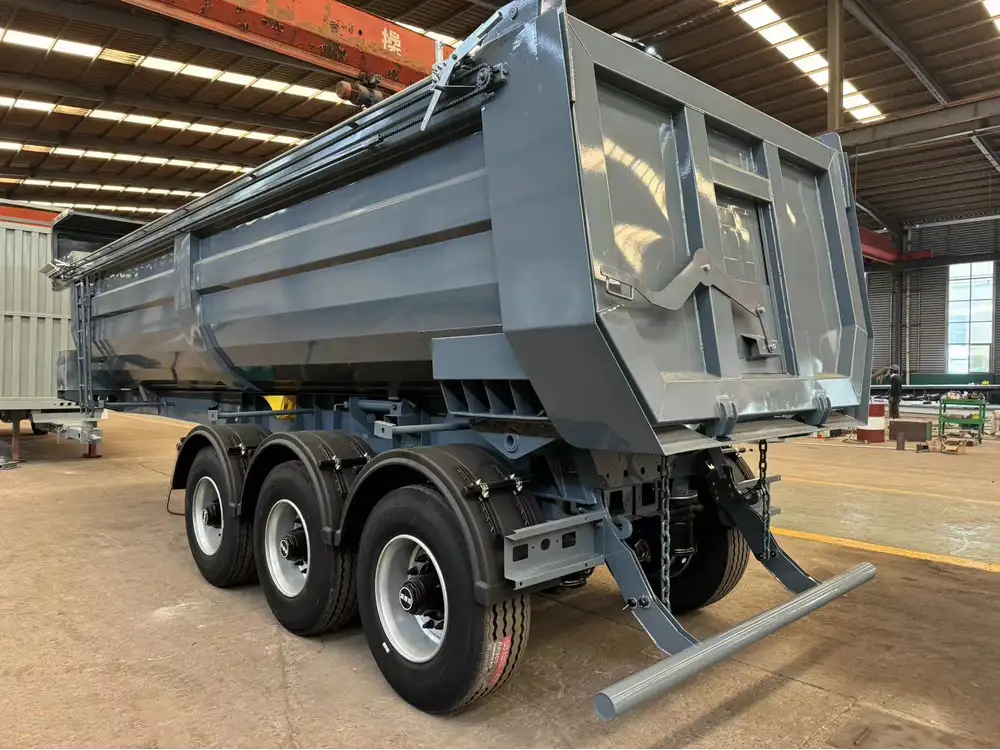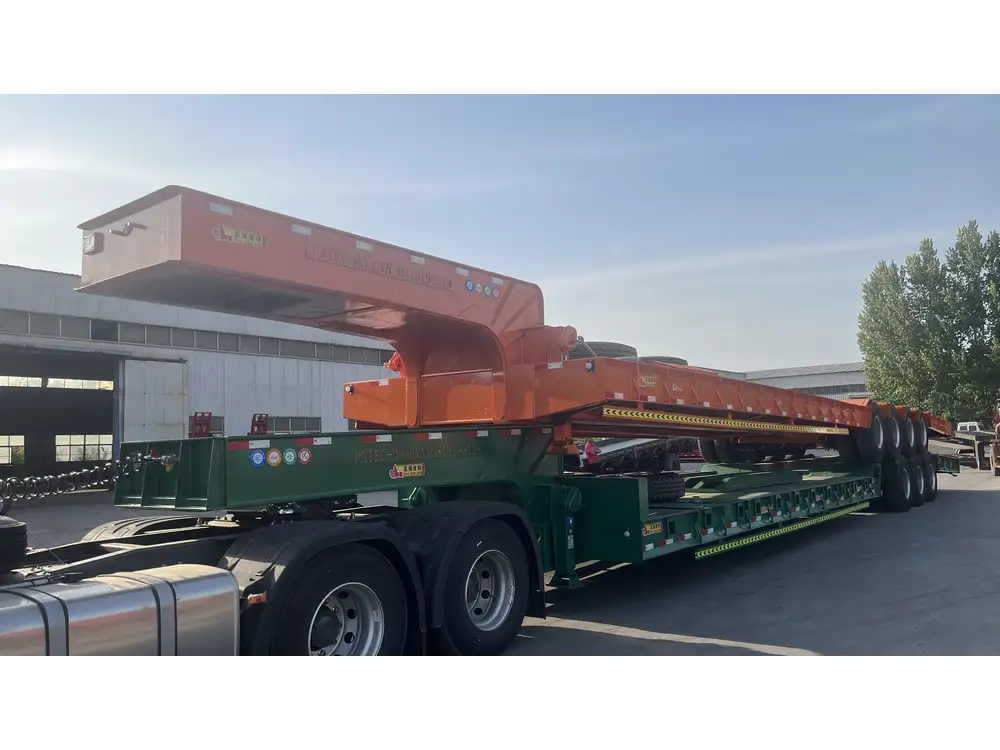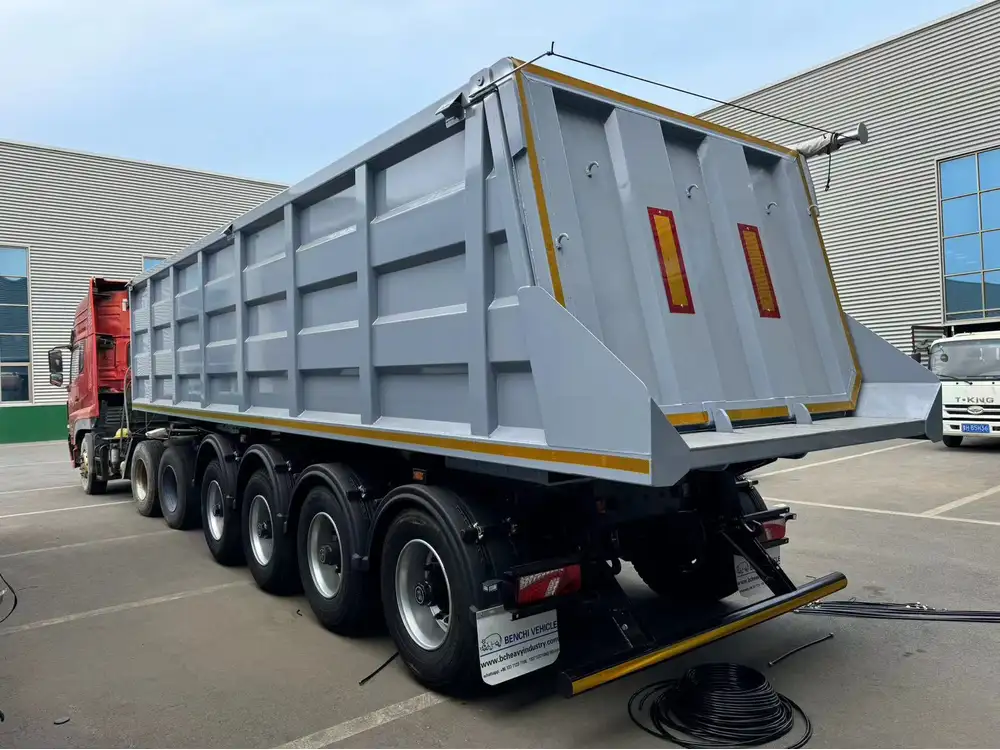Moving a semi-trailer is a complex task that requires careful planning, precise execution, and a strong understanding of the equipment involved. Whether you’re transporting freight across town or relocating your trailer to a different site, knowing the ins and outs of moving a semi-trailer is essential for efficiency and safety. In this guide, we delve deeply into the processes, techniques, and tools you need to navigate this task successfully.
Understanding the Semi-Trailer Basics
Before we delve into the processes involved in moving a semi-trailer, it’s crucial to grasp its anatomy and functionality. Semi-trailers are distinctive because they do not have front wheels; instead, they rely on a tractor for support. Here’s a brief overview:
| Component | Function |
|---|---|
| Chassis | The main frame that supports the load and connects to the tractor. |
| Axles | Allow for movement, distributing weight and providing stability. |
| Suspension System | Absorbs shocks and ensures that the load is balanced. |
| Tires | Essential for traction and road contact. |
| Connectors | Enable attachment to a tractor and facilitate braking. |
Understanding these components will enable better technical decisions when moving the trailer.
Preparation Before Moving

Inspection Checklists
Before embarking on the movement, conduct a thorough inspection of both the semi-trailer and the towing vehicle. A pre-move checklist should include:
- Brakes: Verify that all brakes are operational and check the brake fluid levels.
- Lights: Ensure all lights, including turn signals and brake lights, are functioning.
- Tires: Check tire pressure, tread condition, and look for any visible damage.
- Hitch and Couplings: Inspect for wear, ensuring a secure and reliable connection.
- Load Security: Make sure that the load, if applicable, is securely fastened to prevent shifting during transit.
Securing the Load
If your semi-trailer is loaded, securing the freight is paramount. A shift in weight can dramatically affect vehicle handling and safety. Utilize methods such as:
- Straps and Chains: Secure cargo with high-strength straps or chains, ratcheting them down to prevent movement.
- Load Bars: Install load bars to minimize forward or backward movement during transit.
- Friction Mats: Employ friction mats to enhance load stability.
Route Planning
Strategically planning your route is essential. Consider the following factors:
- Road Conditions: Inspect the condition of roads and bridges; some may have weight limits unsuitable for semi-trailers.
- Height Restrictions: City areas may have overhanging structures that can obstruct taller trailers.
- Weather Conditions: Check the weather forecast and avoid moving in severe conditions.

Moving the Semi-Trailer
Moving your semi-trailer will vary depending on its current position and whether it is loaded. Below are the general methods for both scenarios:
Using a Tractor for Towing
- Connect the Trailer: Align the tractor with the semi-trailer, ensuring that the kingpin is secured in the fifth wheel. Use the locking mechanism to ensure a proper connection.
- Check Weight Distribution: After linking, verify the weight distribution. Ideally, 60% of the total weight should be over the truck’s front axle for optimal handling.
- Start Slowly: Begin driving slowly to assess the stability of the trailer. Gradually increase speed, being mindful of bumps or road anomalies.
Maneuvering in Tight Spaces
When navigating tight spaces, follow these techniques:
- Use Observers: Employ spotters to guide you through difficult turns or narrow areas.
- Don’t Rush: Take your time when backing up or turning; make small adjustments for better alignment.
- Utilize Technology: If available, employ cameras or sensors for additional visibility and safety.

When to Use Specialized Equipment
In some cases, particularly for extremely heavy or oversized loads, it may be wise to utilize specialized equipment:
| Equipment | Use Case |
|---|---|
| Dollies | Useful for moving trailers in tight spaces or around yards. |
| Lowboys | Ideal for transporting heavy machinery that exceeds standard height/weight limits. |
| Jacks | Essential for lifting the trailer to connect/disconnect from the tractor. |
Unloading the Semi-Trailer
Upon arriving at your destination, unloading is as critical as loading. Follow these steps:
- Positioning: Park on flat ground with ample space around the truck and trailer.
- Safety First: Confirm that the trailer is stabilized (use wheel chocks, if necessary) before detaching from the tractor.
- Inspect Upon Arrival: After unloading, check the trailer for any damages that occurred during transit.
Common Challenges and Solutions
Though moving a semi-trailer can be straightforward, some challenges may arise. Here’s a brief overview, along with potential solutions:

Problem 1: Lack of Visibility
Solution: Use Cameras
Many new tractors come equipped with rear and side cameras. If yours does not, consider investing in aftermarket systems. They enhance visibility and minimize blind spots significantly.
Problem 2: Weight Distribution Issues

Solution: Scale Before Transport
If uncertain about weight distribution, utilize a weigh station prior to your move. Properly distributed weight improves braking and steering response.
Problem 3: Legal Regulations
Solution: Familiarize with Local Laws
Every jurisdiction has specific regulations concerning semi-trailer transport, including permits for oversized loads. Always consult local regulations ahead of time.

Problem 4: Weather Delays
Solution: Monitor and Adapt
Set up notifications to track weather changes. If adverse conditions are predicted, reschedule your move to prioritize safety.
Post-Move Maintenance
After the successful transportation of your semi-trailer, post-move maintenance is vital to keep your equipment in optimal working condition. Consider the following:
- Conduct a Full Inspection: After moving, check all components for any potential damage or wear.
- Maintain Records: Document inspections and maintenance performed. This data will be useful for warranty claims and future maintenance needs.
- Regular Servicing: Establish a routine servicing schedule, focusing on areas like brake inspections, light replacements, and tire rotations.

Frequently Asked Questions
Q1: How do I know if my truck can handle the weight of my semi-trailer?
A: Every truck has a Gross Vehicle Weight Rating (GVWR). Ensure that the total weight of your load and the trailer does not exceed this rating. Consult your vehicle’s manual or manufacturer for details.
Q2: What safety equipment should I keep in my cab when moving a semi-trailer?
A: Essential items include reflective triangles, a fire extinguisher, spare fuses, a basic toolkit, and a first aid kit.

Q3: Are there specific cargo securing methods for different types of loads?
A: Yes, different loads require unique securing methods. For example, palletized loads benefit from straps while large, oversized structures might need chains and binders.
Conclusion
Mastering the art of moving a semi-trailer is no small feat, but with attentive preparation, execution, and post-move care, it becomes manageable. Through understanding the components involved, preparing adequately, and employing best practices during transit, one can ensure a safe and efficient move. Rely on this comprehensive guide as a resource throughout your journey, and rest assured that with the right techniques, moving a semi-trailer can be a seamless experience.



